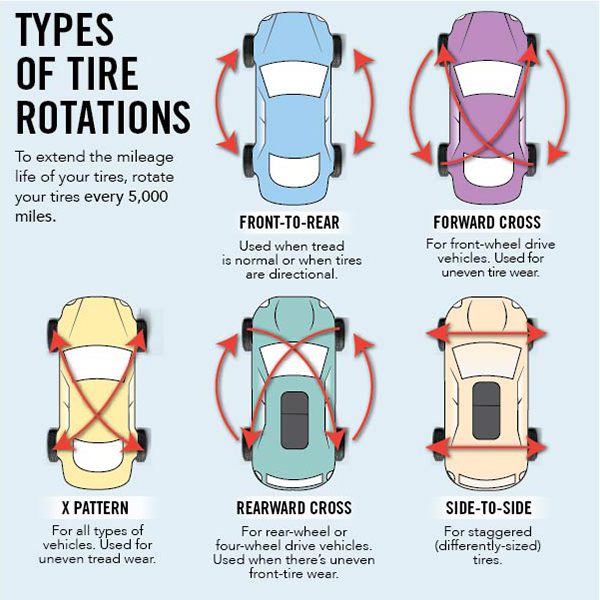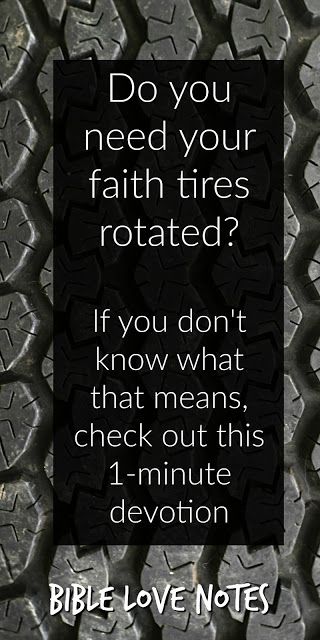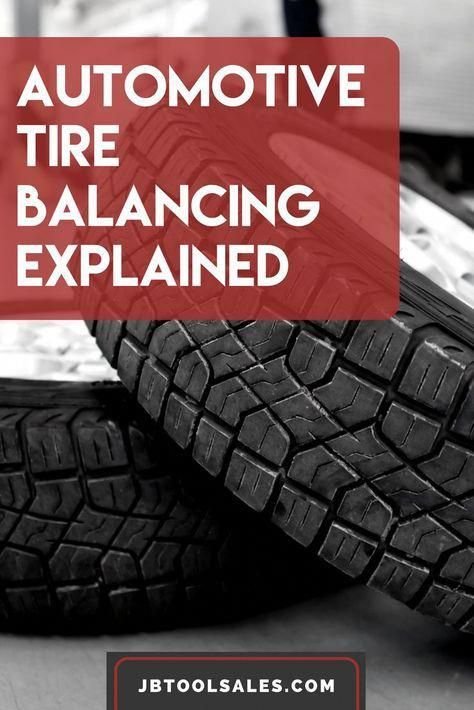Which is the one part of your vehicle that gets affected the most by wear and tear? It is the tires. The tires come in direct contact with the road and hence face the most wear and tear damage and hence need to be replaced often. But tire replacement can be very expensive, so it is important to keep a check on our tires and make sure we maximize their life. How to do that you ask? Well, read ahead to find out! What is tire rotation and balancing? How often should you get your tires rotated? You can get your tires rotated here at Akins Ford in Winder, GA!
View Our Used Ford F-150 Inventory
Contact Us
What is the difference between tire rotation and balancing?Generally speaking, the front tires of your Ford vehicle absorb more friction and hence wear out faster than the rear tires. So, to ensure they wear out evenly, the tires are rotated after some time- the front tires go to the back and the rear tires are put in their place. This helps maximize the total life of all your tires combined.
Tire balancing on the other hand is not a routine service. It is needed every once in a while, and the driver can tell when it is time for getting the tires balanced by simply checking for shaking or vibration in the steering wheel while driving. Tire balancing also helps protect the rims of the tire and maintain vehicle stability.
[Read more: How to Reset the Tire Pressure Sensors on Your Ford Vehicle] How often should your Ford vehicle tires be rotated?As a good rule of thumb, you should have your Ford vehicle tires rotated and aligned every 7,000 miles. But it also depends upon your specific model and driving style. Regardless of your odometer reading, if you see any of the above-mentioned signs, please visit your nearest mechanic as soon as possible.
If you live in or around Winder, GA, and want to get your Ford vehicle’s tires rotated and balanced, visit us here at Akins Ford today! Our team of experts will be happy to answer all your questions and assist you! Meanwhile, you can also check out other guides and how-to posts here! Hope to see you soon!
This entry was posted on Tuesday, August 3rd, 2021 at 1:29 pm and is filed under Guides & How Tos, Service. You can follow any responses to this entry through the RSS 2.0 feed. Both comments and pings are currently closed.
Tire balancing is a tune-up for your wheel-tire set. It makes sure that weight is evenly distributed around the entire circumference of the unit. The common symptoms of out-of-balance tires are uneven and faster tread wear, poor fuel economy, and vibration in the steering wheel, the floorboard or the seat that gets worse at faster speeds.
It makes sure that weight is evenly distributed around the entire circumference of the unit. The common symptoms of out-of-balance tires are uneven and faster tread wear, poor fuel economy, and vibration in the steering wheel, the floorboard or the seat that gets worse at faster speeds.
When all areas of the wheel-tire unit are as equal in weight as possible, the tire will roll smoothly. This helps it wear evenly, for longest life. Balancing also contributes to ride comfort: Imbalanced tires will wobble or hop up and down, which causes vibration. If a front tire isn’t properly balanced you’ll likely feel vibration in the steering wheel. If the problem is in the rear the tremor will be noticeable in the seat or floor.
Imbalanced tires are easily corrected, but the work is precise. It’s done by attaching small weights, just fractions of ounces, to the wheel.
Everyday wear on tires will contribute to imbalance. Normal manufacturing imperfections are also a cause: Tires and wheels don’t have precisely equal weight distribution. They’ll be slightly heavier in some spots.
They’ll be slightly heavier in some spots.
Just half an ounce in weight difference is enough to cause a vibration when you’re driving.
Rebalancing is done in a tire shop by putting the wheel-tire unit on a tire balancing machine that takes measurements to pinpoint lighter or heavier areas and making adjustments to account for these weight differences. The best time to get it done is when tires are being rotated, both for convenience and because you might have a tire out of balance on the rear of the vehicle and won’t feel it until it is moved to the front.
Here’s how it’s done:
 But sometimes it requires the tech to also move the tire on the wheel and then rebalance. This is because a heavy spot on the wheel and on the tire can sometimes line up together, causing a greater imbalance that needs to be corrected.
But sometimes it requires the tech to also move the tire on the wheel and then rebalance. This is because a heavy spot on the wheel and on the tire can sometimes line up together, causing a greater imbalance that needs to be corrected.Though both should be part of regular auto maintenance, balancing isn’t the same as getting an alignment. Wheel alignment corrects the angles of the tires so they travel in the same direction and make contact with the road properly. Alignment reduces uneven tire wear and extends the life of your tires. Oftentimes tire balancing and alignment are perceived to be the same thing, but are not.

Tire balancing and rotation are often done at the same time, but they aren’t the same service. Tire rotation is when a vehicle’s front and rear wheels are switched to even out tread wear between them. Since both require removing each wheel, it’s convenient to do them at the same time.
Vibration when underway could be caused by an imbalanced tire and wheel assembly or something else — a bent wheel, a damaged tire (which won’t be fixed by balancing), worn suspension parts or other aging components. If you feel a vibration, don’t wait to get it diagnosed. You’ll head off other problems — and enjoy a smoother ride — when your tires are well balanced.
Schedule an Appointment
LADA
UAZ
KIA
Hyundai
Renault
Toyota
Volkswagen
Skoda
BMTs
BMAN
BMARS
BMAN
Mitsubishi
Mazda
Ford
All brands
Related materials
Seasonal tire change: everything car owners need to know
To begin with, a small educational program. Balancing is the alignment of the center of mass of the wheel with the axis of rotation. In this case, the loads are fixed opposite the heavy part of the wheel. This is the definition of static balancing. And since the wheel is not a thin disk, but rather a wide roller, the so-called dynamic balancing is necessary, when loads are placed both on the outer and on the inner parts of the wheel disk. Naturally, the wheels need to be balanced immediately after mounting the tire on the rim: after all, the imbalance can reach 50–60 g on each side. If it turns out more, then it makes sense to "twist" the tire relative to the disk, ensuring their mutual rotation by 180 degrees. With this initial balancing, tire workers provide an imbalance of less than 5 g per side. It is believed that a new tire is capable of slightly changing its position on the disk in the first kilometers, and therefore the balancing will go away a little.
Balancing is the alignment of the center of mass of the wheel with the axis of rotation. In this case, the loads are fixed opposite the heavy part of the wheel. This is the definition of static balancing. And since the wheel is not a thin disk, but rather a wide roller, the so-called dynamic balancing is necessary, when loads are placed both on the outer and on the inner parts of the wheel disk. Naturally, the wheels need to be balanced immediately after mounting the tire on the rim: after all, the imbalance can reach 50–60 g on each side. If it turns out more, then it makes sense to "twist" the tire relative to the disk, ensuring their mutual rotation by 180 degrees. With this initial balancing, tire workers provide an imbalance of less than 5 g per side. It is believed that a new tire is capable of slightly changing its position on the disk in the first kilometers, and therefore the balancing will go away a little.
Now let's turn directly to our topic. If you alternately install either winter or summer tires on the same wheels, then you cannot avoid balancing. There is nothing to argue about here. The question of balancing every season arises only for those car owners who have two complete sets of wheels: summer and winter.
There is nothing to argue about here. The question of balancing every season arises only for those car owners who have two complete sets of wheels: summer and winter.
Related materials
Routine work that everyone ignores (and in vain!)
So, should the wheels be balanced at every seasonal change?
If you approach the process formally, then you should remember the instructions for the car. It is usually recommended to balance the wheels after a run of 10,000 to 15,000 km. If you drive less in one season, then you definitely shouldn’t balance, except for the cases specified below.
But this is in theory, but in practice I advise you to monitor the behavior of the car. If there is no noticeable beating of the steering wheel, then balancing is not needed. The beating of the rear wheels is felt less, but they usually suffer less often. In any case, you should feel a strong imbalance.
If you change your own wheels twice a year, the following recommendation applies. Put the wheels on and ride for a couple of days. During this time, the tire will get rid of the deformations that occurred during storage. If there are no vibrations at any speed with which you drive, balancing can not be carried out.
Put the wheels on and ride for a couple of days. During this time, the tire will get rid of the deformations that occurred during storage. If there are no vibrations at any speed with which you drive, balancing can not be carried out.
Related materials
10 procedures without which it is better not to drive
Balancing is required in the following cases:
Photo: depositphotos.com
Our new video
New Russian sedan at the price of Vesta on tests "Behind the wheel"
When will the Russian electric truck EVM Pro appear? Details known
Test of the most modern in the history of the Volga GAZ-3111
Like this post? Subscribe and you will always be in the know!
Driving in Zen
Most car owners, having once balanced the wheels in a tire shop, mentally “put a tick” in front of the corresponding list of operations necessary for the car and forget about this topic. But in vain.
But in vain.
Maxim Stroker
Let's say right away that car owners, who change tires seasonally on the same rims every autumn and spring, in most cases do not have to think about preventive wheel balancing. With their rubber, this operation is carried out at each visit to the tire shop. Another thing is if a person, for example, drives the same “all-weather” all year round. Or the car owner has two seasonal sets of wheels mounted on disks.
Recall that balancing is the operation of moving the center of mass of the wheel to its geometric center on the axis of rotation. To do this, the service employee attaches weights of the required weight to the disk of the assembled wheel in the places determined using the balancing stand. Over time, these metal patches can fall off. Tires wear unevenly. Each puncture in rubber means an extra patch on its inner surface or a tourniquet inserted into the tread. The disk itself can bend when it hits the hole.
All these factors significantly shift the center of gravity of the wheel. Its shift leads to the appearance of beats and vibrations on the go. The suspension, the steering system suffer from this, the wheel itself begins to wear unevenly even at speeds when the driver does not feel much discomfort on the steering wheel. The approximate frequency with which it is recommended to resort to preventive wheel balancing is calculated in kilometers.
Its shift leads to the appearance of beats and vibrations on the go. The suspension, the steering system suffer from this, the wheel itself begins to wear unevenly even at speeds when the driver does not feel much discomfort on the steering wheel. The approximate frequency with which it is recommended to resort to preventive wheel balancing is calculated in kilometers.
Approximately every 10,000-15,000 km. it is worth visiting a tire shop and checking the balance, since obvious beating, as the main sign of imbalance, can only be felt for the front wheels. In this case, at a certain speed, the steering wheel starts to shake frantically. The rear axle is not connected to the steering wheel, and therefore it is much more difficult to notice that something is wrong with it.
Thus, if the car rolls more than 15,000 km per season on one set of tires, it is highly recommended to call the tire shop after reaching this mileage. For fans of all-weather tires, this recommendation applies in the same way, only without reference to the time of year.